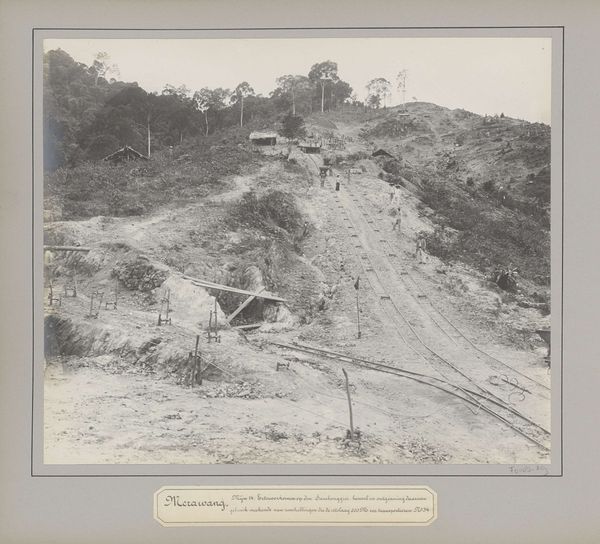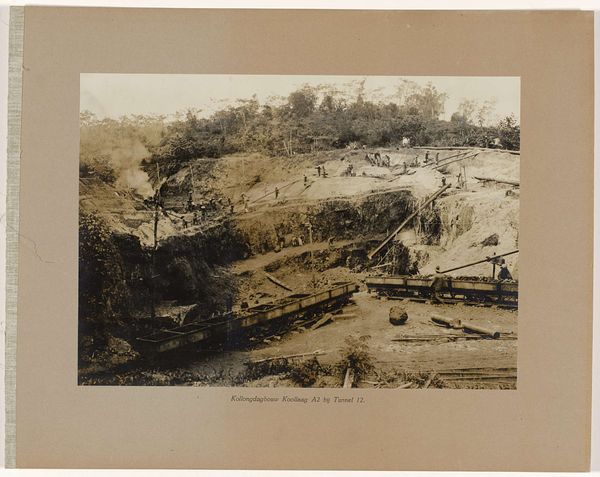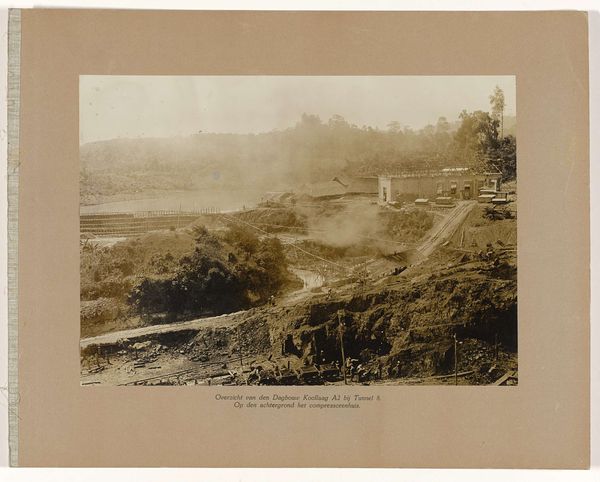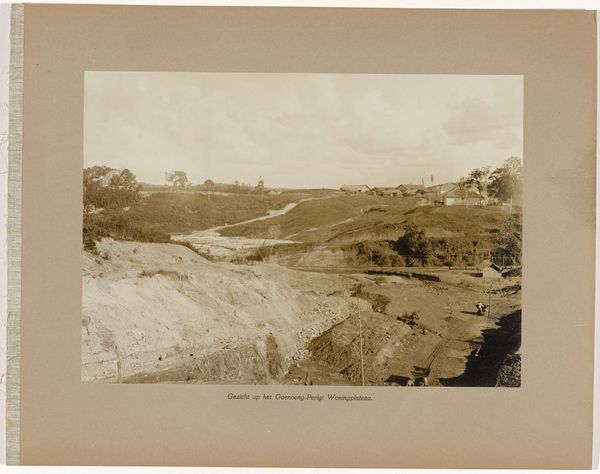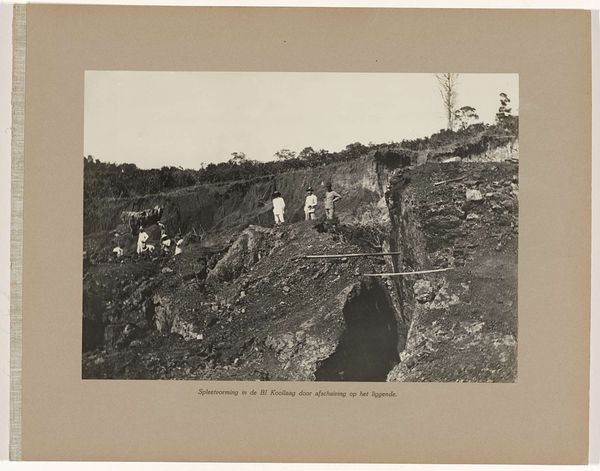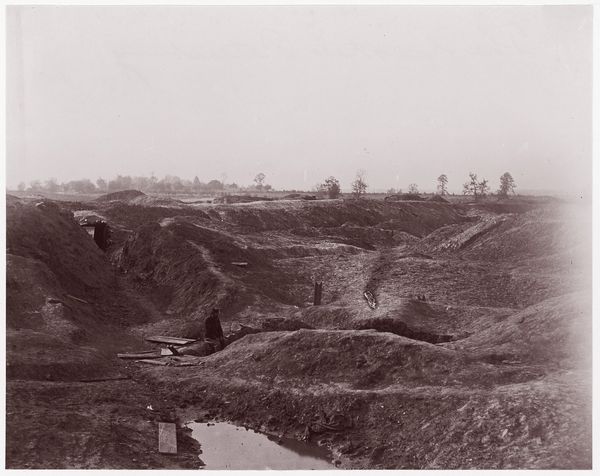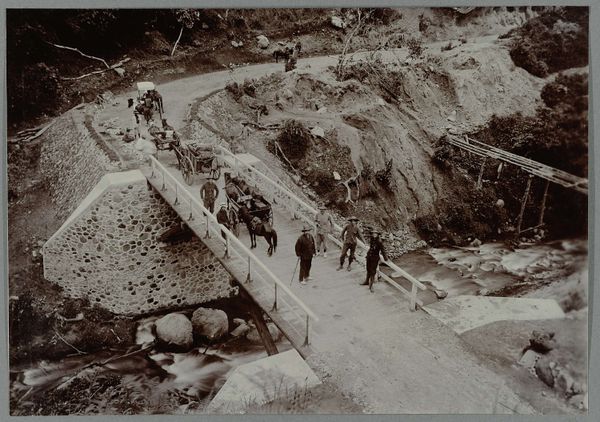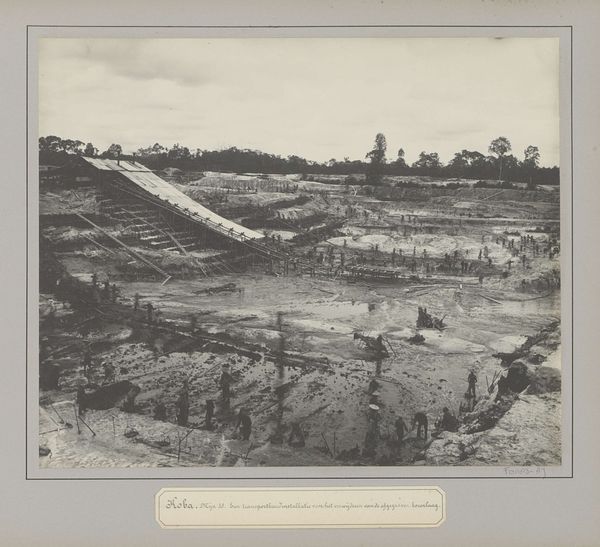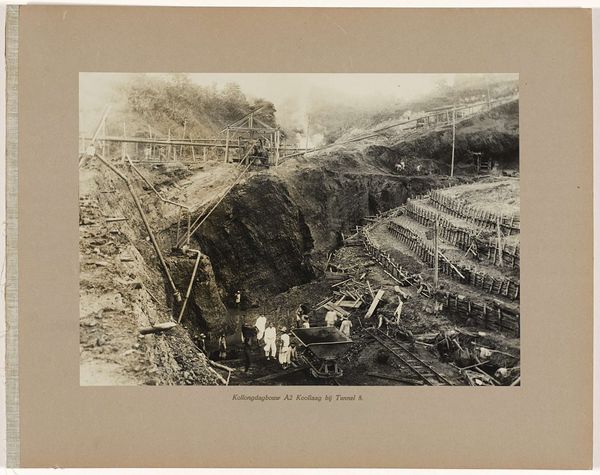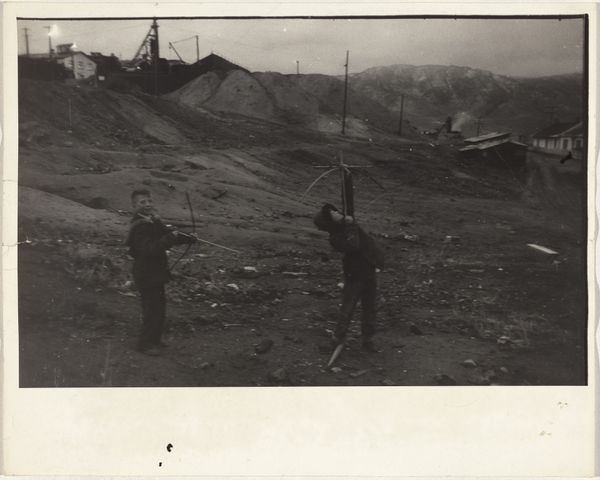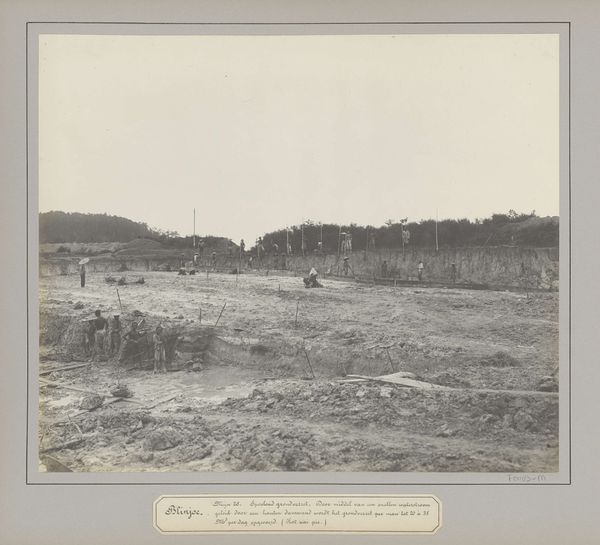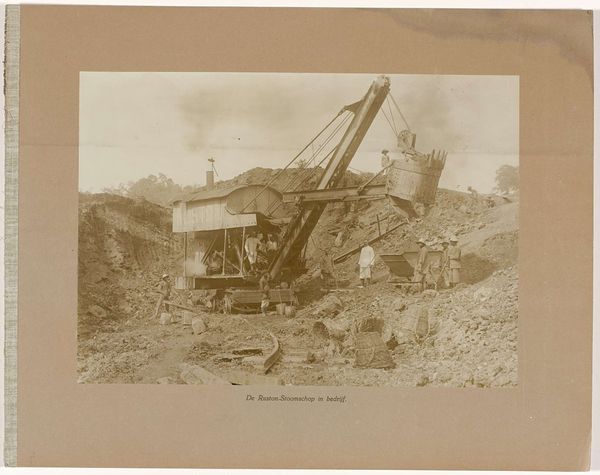
Transport van zware machinedeelen voor de montage van den stoomschop 1921 - 1922
0:00
0:00
anonymous
Rijksmuseum
print, photography, gelatin-silver-print
# print
#
landscape
#
etching
#
photography
#
gelatin-silver-print
#
mixed medium
#
realism
Dimensions: height 278 mm, width 392 mm
Copyright: Rijks Museum: Open Domain
Editor: Here we have an intriguing gelatin silver print from 1921-22, "Transport van zware machinedeelen voor de montage van den stoomschop," showing the transport of heavy machinery. It really strikes me how raw and documentary it feels. What draws your attention when you look at this image? Curator: What strikes me is the overt display of labor, the physical exertion demanded by industrial progress. This isn't some romanticized view of machinery; it lays bare the human cost embedded in its production and assembly. Notice how the figures are dwarfed by both the machinery and the landscape, rendered almost as part of the mechanical process. Editor: Yes, it feels almost like they're being consumed by the machines. I am also struck by the use of photography, what do you think that medium represents in terms of materiality here? Curator: Photography at this moment acts as a very specific witness. Consider the gelatin silver print process: layering chemicals, manipulating light, fixing an image onto a surface. It becomes a document of a specific type of work – and by extension it provides material evidence of production within a larger political-economic system. Does this prompt us to ask questions about how such an endeavor was financed? Whose interests are served here? Editor: That's a powerful way to frame it, almost like a forensic investigation into industry and labor. How might an understanding of labor practices during this period reshape how we interpret this seemingly straightforward scene? Curator: Precisely. It shifts from being a mere depiction of machinery to an interrogation of the processes—both material and social—that made it possible. Looking at how that labor is arranged, considering whose labor this might be. This transforms a documentary photograph into a social commentary. Editor: This makes me look at it with a different lens, less as a historical record and more as an artifact loaded with meaning. Curator: Agreed. It reveals a landscape not just being reshaped physically but socially and economically, urging us to think about the ramifications of such 'progress'.
Comments
No comments
Be the first to comment and join the conversation on the ultimate creative platform.
